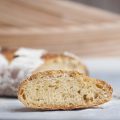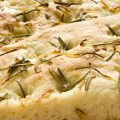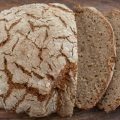This homemade bread is a delightful combination of tangy sourdough flavor and the hearty richness of rye flour. Perfectly suited for sandwiches, toast, or enjoyed on its own, this recipe offers a healthier alternative to store-bought bread. By harnessing the power of natural fermentation through a sourdough starter, we create a bread that not only tantalizes the taste buds but also provides potential benefits for digestion and overall well-being. With its soft and tender crumb, robust flavor, and a touch of tang, this sourdough rye sandwich bread recipe will elevate your sandwiches to new levels of satisfaction. So, gather your ingredients, don your apron, and embark on a baking adventure that will yield a delicious loaf to savor and share with loved ones.
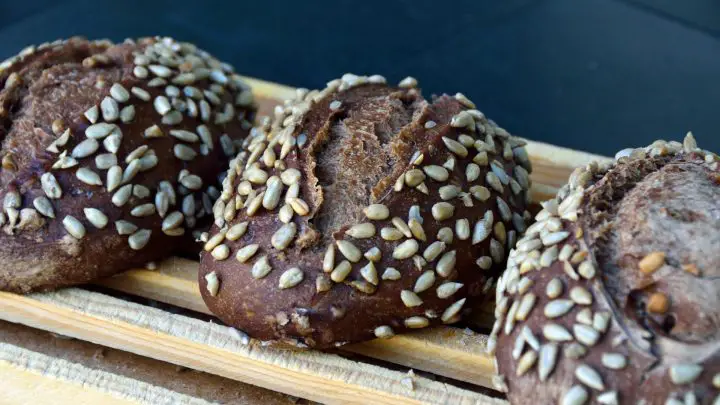
Table of Contents
- Why Use Rye Flour in Sourdough Bread?
- Is Sourdough Rye Bread Good For You?
- Sourdough Rye Bread With Caraway Seeds Recipe
- Tips For Success
- Optional Add-Ins For Sourdough Rye Bread
- Sourdough Rye Bread
- FAQs
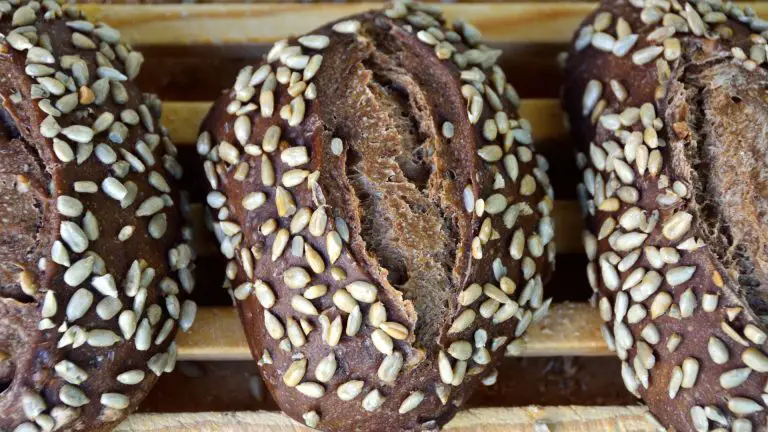
Sourdough Rye Bread With Caraway Seeds Recipe
Indulge in the robust flavors of homemade sourdough rye bread with a delightful twist of caraway seeds. This recipe combines the earthiness of rye flour with the aromatic punch of caraway, resulting in a loaf that’s both satisfying and flavorful.
- Total Time: 10 hrs 55 mins
- Yield: 1 loaf 1x
Ingredients
- 50g of active sourdough starter
- 365g of warm water
- 20g of honey
- 1 cup of whole-grain rye flour
- 400g of bread flour
- 9g kosher salt
- 3 tbsp caraway seeds
Instructions
- In a large bowl, whisk together sourdough starter, water, and honey. Add flour and salt. Use your hands to pinch everything together, until the ingredients are well incorporated. Cover this with a damp towel and let this rest for 30 minutes.
- After the dough has rested for 30 minutes, add your caraway seeds, and work them into the dough using your fingers. Then smooth the dough into a ball.
- Cover the bowl with a damp towel and let this rise overnight at room temperature or for 6-8 hours. The dough will be ready once it has doubled in size. After 30 minutes, remove the dough from the bowl and stretch and fold the dough for structure and height. Pull the edges of the dough up and over, you can pull as high as you can, taking care to not tear the dough. Then fold the stretched pieces into the middle of the dough. Continue doing this until the entire dough has been stretched. Repeat this process a total of 3 times, at 30-minute intervals.
- After the bulk rise, remove the rye sourdough from the bowl, and place it onto a lightly floured work surface. Shape the dough into a round, starting at the top of the dough. Fold the dough towards the center, then turn the dough slightly and fold the next portion of dough. Repeat until you have shaped the entire dough. Flip the dough and let it rest for 5-10 minutes. While it rests, line an 8-inch bowl with a towel, and a slight dust of flour. With floured hands, cup the dough and pull it towards you in a circular motion, to tighten the shape. Use a bench scraper to place the dough into the bowl, seam side up.
- Cover the bowl and let this rise for 30-45 minutes. The dough will be ready when it appears plump and puffy, but not quite doubled in size. While it rises, preheat the oven and Dutch oven to 400 degrees Fahrenheit.
- Place parchment paper over the dough and flip the bowl to release the dough. Sprinkle the dough with some flour, and gently rub the surface of the dough with your hands. Use a bread lame or sharp knife to score the dough. You can keep the design simple, or as intricate as you wish! Use the parchment paper to transfer the dough to a Dutch oven.
- Bake the sandwich loaf in the Dutch oven and cover, on the center rack for 20 minutes. Then remove the lid and bake for an additional 20 minutes.
- Transfer the dough to a wire rack, and cool for 1 hour before slicing.
- Prep Time: 10 mins
- Cook Time: 45 mins
- Category: bread
- Cuisine: American
Nutrition
- Serving Size: 1 slice
- Calories: 140 kcal
- Fat: 0 g
- Carbohydrates: 22 g
- Fiber: 4 g
- Protein: 5 g
Why Use Rye Flour in Sourdough Bread?
Rye flour is often used in sourdough bread because it has a unique flavor and texture that complements the tangy taste of sourdough.
Rye flour is also high in pentosans, which are complex sugars that help to create a more open crumb structure in the bread, making it light and airy. Additionally, rye flour contains enzymes that can help to break down the gluten in wheat flour, which can improve the overall texture of the bread.
So, if you’re looking to add some depth of flavor and texture to your sourdough bread, rye flour is definitely worth considering!
Is Sourdough Rye Bread Good For You?
Sourdough rye bread can be good for you, but it depends on the specific recipe and ingredients used.
Rye flour is a whole-grain flour that is higher in fiber, vitamins, and minerals than refined wheat flour. It’s also lower on the glycemic index, which means it causes less of a spike in blood sugar levels.
Sourdough bread made with rye flour can also be easier to digest, as the natural fermentation process helps to break down some of the gluten and other complex carbohydrates in the bread. However, it’s important to note that some sourdough rye bread may contain added sugars or fats, so it’s important to read the ingredient list and nutrition label before making a decision about whether or not to include it in your diet.
Sourdough Rye Bread With Caraway Seeds Recipe
Indulge in the robust flavors of homemade sourdough rye bread with a delightful twist of caraway seeds. This recipe combines the earthiness of rye flour with the aromatic punch of caraway, resulting in a loaf that’s both satisfying and flavorful.
- Type: Bread
- Cuisine: American
- Recipe yield: 1 loaf
- Calories: 140kcal
- Preparation time: 10 minutes
- Cooking time: 45 minutes
- Total time: 10H55M
Ingredients
- 50g of active sourdough starter
- 365g of warm water
- 20g of honey
- 1 cup of whole-grain rye flour
- 400g of bread flour
- 9g kosher salt
- 3 tbsp. caraway seeds
Instructions
- In a large bowl, whisk together sourdough starter, water, and honey. Add flour and salt. Use your hands to pinch everything together, until the ingredients are well incorporated. Cover this with a damp towel and let this rest for 30 minutes.
- After the dough has rested for 30 minutes, add your caraway seeds, and work them into the dough using your fingers. Then smooth the dough into a ball.
- Cover the bowl with a damp towel and let this rise overnight at room temperature or for 6-8 hours. The dough will be ready once it has doubled in size. After 30 minutes, remove the dough from the bowl and stretch and fold the dough for structure and height. Pull the edges of the dough up and over, you can pull as high as you can, taking care to not tear the dough. Then fold the stretched pieces into the middle of the dough. Continue doing this until the entire dough has been stretched. Repeat this process a total of 3 times, at 30-minute intervals.
- After the bulk rise, remove the rye sourdough from the bowl, and place it onto a lightly floured work surface. Shape the dough into a round, starting at the top of the dough. Fold the dough towards the center, then turn the dough slightly and fold the next portion of dough. Repeat until you have shaped the entire dough. Flip the dough and let it rest for 5-10 minutes. While it rests, line an 8-inch bowl with a towel, and a slight dust of flour. With floured hands, cup the dough and pull it towards you in a circular motion, to tighten the shape. Use a bench scraper to place the dough into the bowl, seam side up.
- Cover the bowl and let this rise for 30-45 minutes. The dough will be ready when it appears plump and puffy, but not quite doubled in size. While it rises, preheat the oven and Dutch oven to 400 degrees Fahrenheit.
- Place parchment paper over the dough and flip the bowl to release the dough. Sprinkle the dough with some flour, and gently rub the surface of the dough with your hands. Use a bread lame or sharp knife to score the sourdough dough. You can keep the design simple, or as intricate as you wish! Use the parchment paper to transfer the dough to a Dutch oven.
- Bake the sandwich loaf in the Dutch oven and cover, on the center rack for 20 minutes. Then remove the lid and bake for an additional 20 minutes.
- Transfer the dough to a wire rack, and cool for 1 hour before slicing.
Nutrition
- Calories: 140kcal
- Carbohydrates: 22g
- Fiber: 4g
- Protein: 5g
- Fat: 0g
- Saturated fat: 0g
Tips For Success
Here are some tips for achieving success when making sourdough rye bread:
- Adjust hydration: Rye flour absorbs more water than wheat flour, so consider increasing the hydration level of your dough. Start with a slightly higher water-to-flour ratio and adjust as needed during mixing and kneading to achieve the right consistency.
- Mix with precision: Rye dough can be stickier and more challenging to handle. Make sure to mix the ingredients thoroughly, paying attention to incorporating all the flour. Use your hands or a dough scraper to mix and knead the dough until it comes together.
- Practice gentle handling: When shaping the dough, be gentle to avoid deflating too much air. Rye dough is less elastic than wheat dough, so handle it delicately to maintain its structure.
- Utilize stretch and folds: Incorporate a series of stretch and folds during the bulk fermentation stage. This technique strengthens the dough’s structure, improves gluten development, and helps it hold its shape during baking.
- Extend proofing time: Rye sourdough benefits from a longer proofing time. Consider extending the final proofing stage to allow the dough to rise and develop flavor fully. You can proof at room temperature or in the refrigerator for a slower, more controlled rise.
- Preheat baking vessel: Preheating your Dutch oven, baking stone, or baking sheet is crucial for achieving a good crust and oven spring. Ensure your baking vessel is hot before transferring the proofed dough to it.
- Score the dough: Just before baking, score the top of the dough with a sharp knife or a bread lame. This helps control the expansion of the bread during baking and prevents it from cracking unpredictably.
- Monitor baking temperature and time: Rye bread tends to bake at a slightly lower temperature and for a longer time compared to wheat bread. Adjust your baking temperature and time accordingly, following the recipe guidelines, to achieve the desired crust color and internal done-ness.
- Allow for proper cooling: Once baked, resist the temptation to slice into the bread immediately. Let it cool completely on a wire rack. This allows the crumb structure to set and ensures a moist interior.
- Practice patience: Sourdough rye bread can be a bit more challenging to master than wheat bread. It may take a few attempts to achieve the desired results. Embrace the learning process, make adjustments along the way, and remember that practice makes perfect.
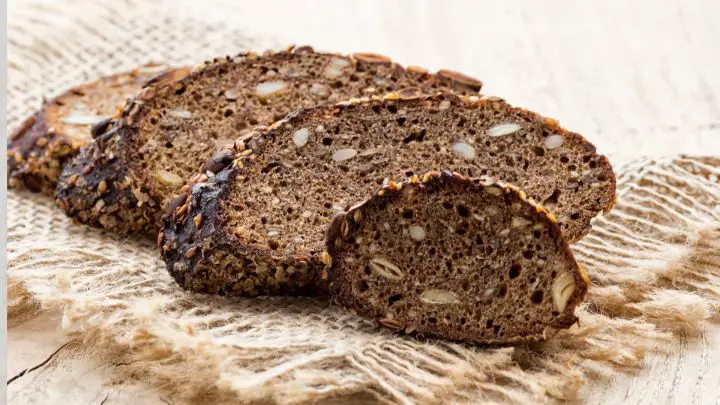
Optional Add-Ins For Sourdough Rye Bread
Sourdough rye bread can be enhanced with various optional add-ins to add flavor, texture, and visual appeal.
Here are some suggestions for optional add-ins you can consider when making sourdough rye bread:
- Seeds: Add a combination of seeds such as caraway seeds, fennel seeds, poppy seeds, or sunflower seeds to the dough. These seeds not only provide crunch but also enhance the flavor of rye bread.
- Nuts: Chopped nuts like walnuts or hazelnuts can be a delightful addition to sourdough rye bread. They add a nice nutty flavor and a bit of texture.
- Dried Fruits: Incorporate dried fruits such as raisins, cranberries, or chopped dates into the dough. They can add a touch of sweetness and provide bursts of flavor in each bite.
- Herbs and Spices: Experiment with adding herbs or spices to your sourdough rye bread. Dill, thyme, or rosemary can infuse the bread with aromatic notes, while spices like cinnamon, nutmeg, or cardamom can create a unique flavor profile.
- Onions or Garlic: Sautéed onions or roasted garlic can impart a savory and slightly sweet taste to your bread. They also add a pleasant aroma.
- Cheese: Grated cheese, such as cheddar, Gruyere, or Parmesan, can be folded into the dough to create a cheesy, flavorful rye bread.
- Whole Grains: For added texture and nutrition, you can mix in whole grains like cracked rye, cracked wheat, or bulgur wheat into the dough. They provide a pleasant chewiness.
When incorporating these add-ins, it’s important to consider their moisture content and adjust the overall hydration of the dough accordingly. You may need to slightly increase the amount of water in the recipe to compensate for the absorption of moisture by the add-ins.
Feel free to experiment with different combinations and quantities of add-ins to suit your taste preferences. Remember to consider the balance of flavors and textures to ensure they complement the natural flavors of the rye sourdough bread.
Sourdough Rye Bread
Sourdough rye bread offers a unique and flavorful experience that captivates the senses. Its hearty texture, deep rye flavor, and tangy aroma make it a cherished staple in the world of artisanal bread baking.
While rye dough can be more challenging to handle, with some adjustments and careful attention to technique, you can achieve success in creating a beautifully structured loaf.
Whether you choose to keep it simple or explore the realm of optional add-ins, sourdough rye bread embodies the artistry and tradition of homemade baking.
So, roll up your sleeves, embrace the process, and embark on a journey to create this delightful bread that nourishes both the body and the soul.
I love rye, so of course there are more rye recipes on the blog:
- Best Russian Sourdough Rye Bread Recipe
- Sourdough Rye Bread Recipe with Homemade Yogurt
- Rustic Rye Sourdough Bread With Milk Kefir
FAQs
Can You Eat Sourdough Bread as a Sandwich?
Absolutely! Sourdough bread makes for great sandwich bread. It pairs well with a variety of fillings, from classic ham and cheese to vegetarian options like avocado and hummus. You can slice the sourdough bread thinly or thickly, depending on your preference, and toast it for added texture and flavor.
Is Rye Sourdough Healthier Than White Sourdough?
Rye sourdough and white sourdough have different nutritional profiles and can offer different health benefits. Rye is a whole grain that is typically higher in fiber, vitamins, and minerals compared to refined wheat flour used in white sourdough.

